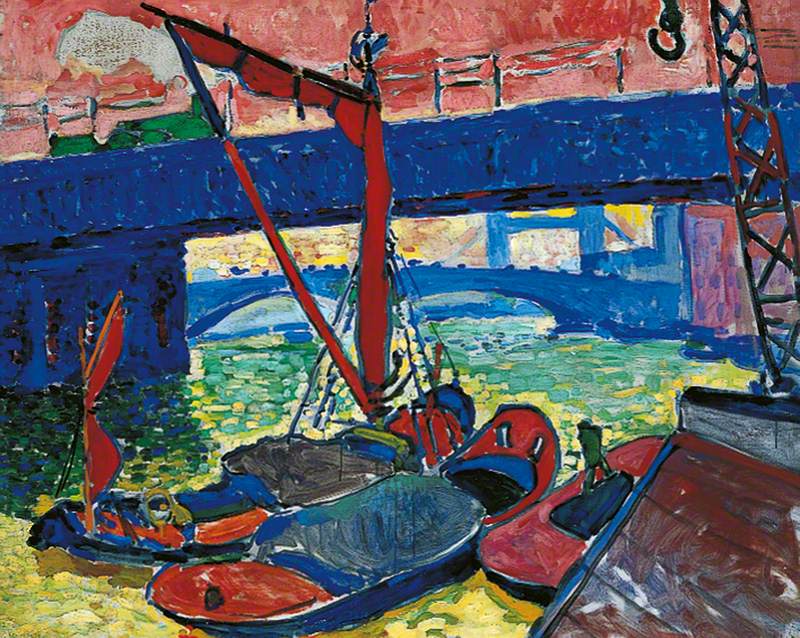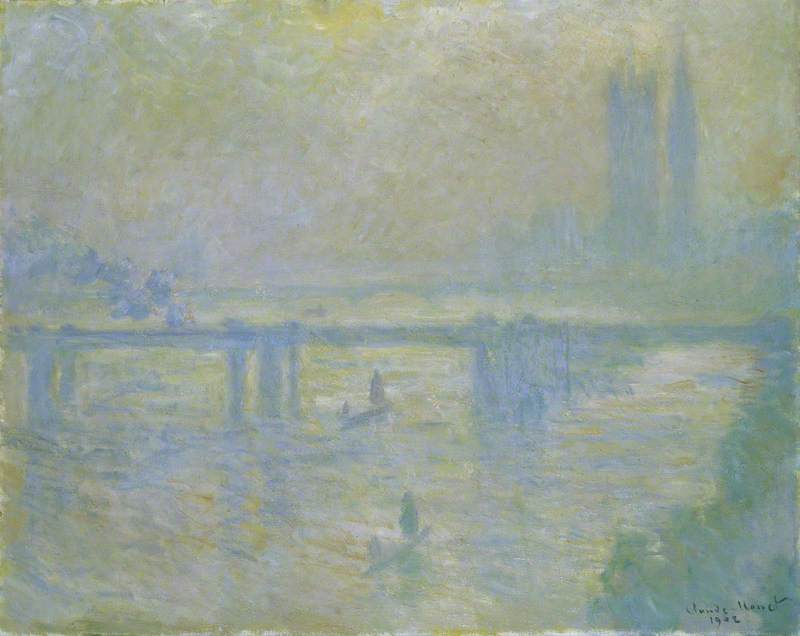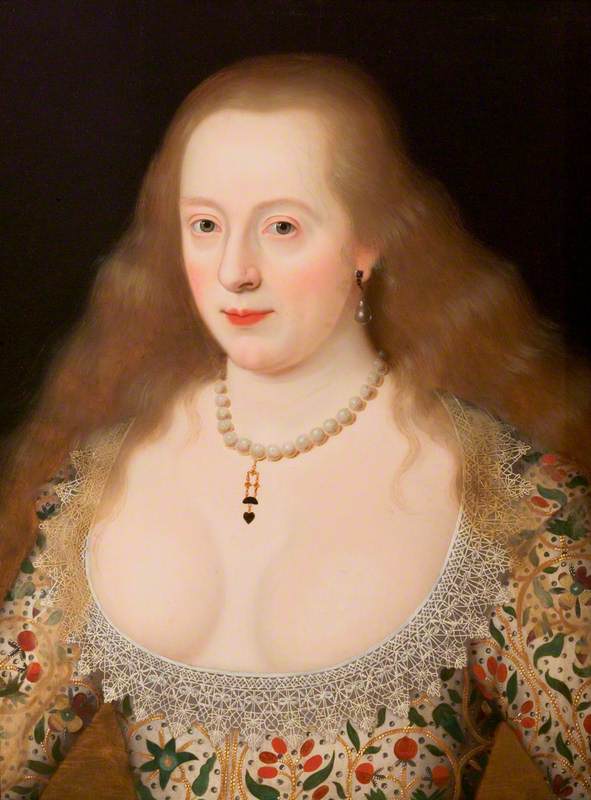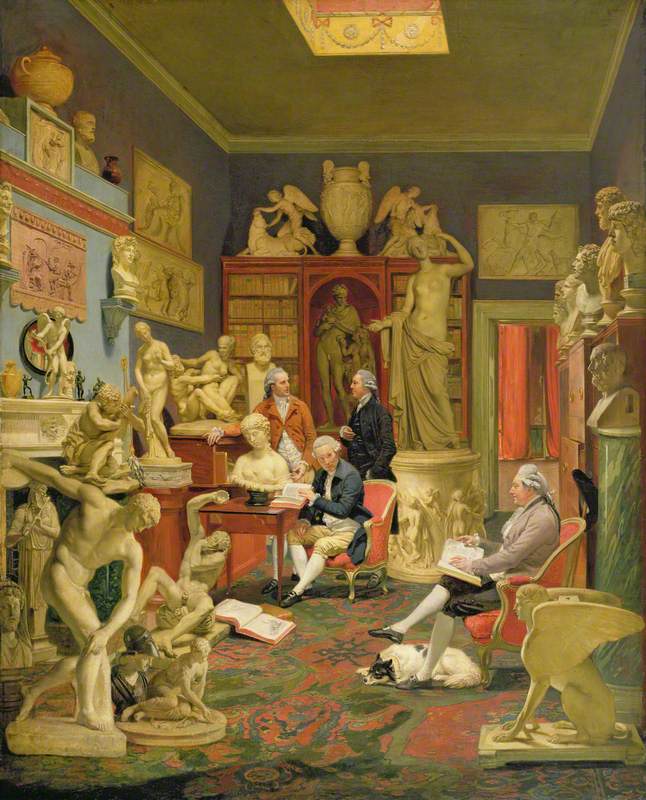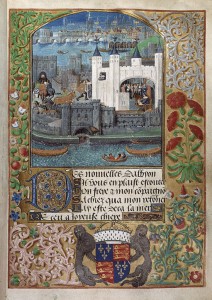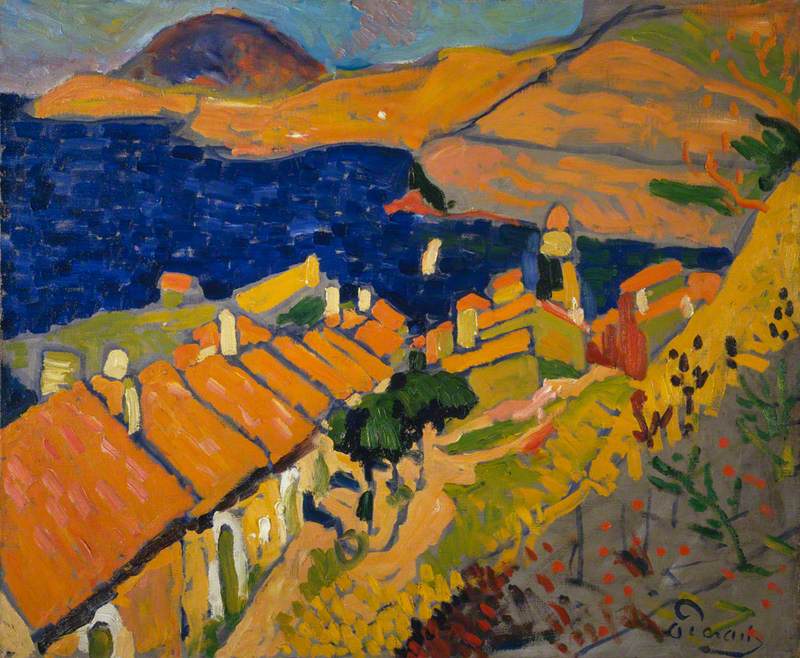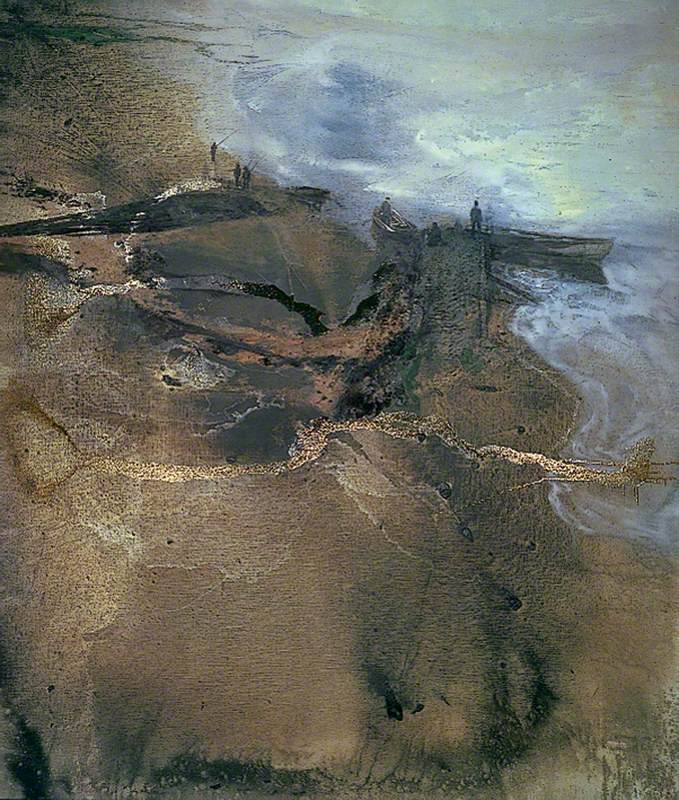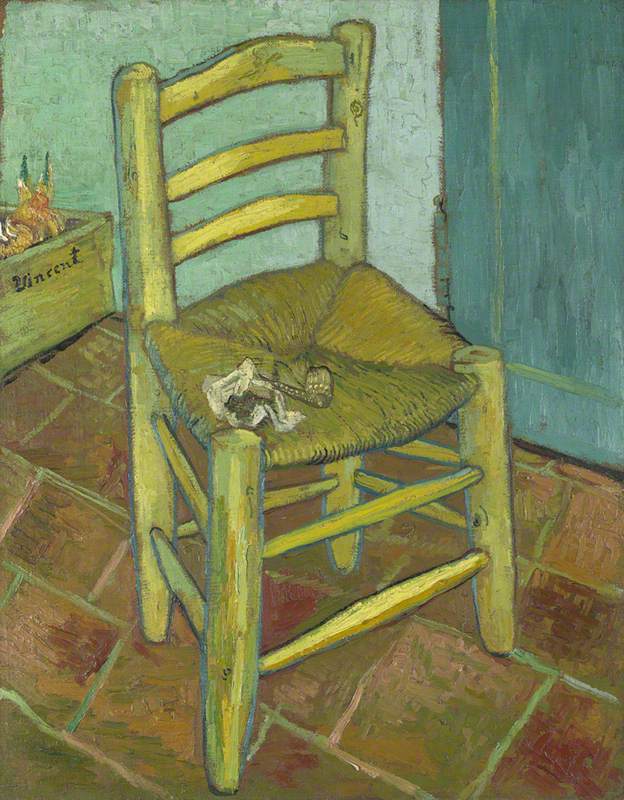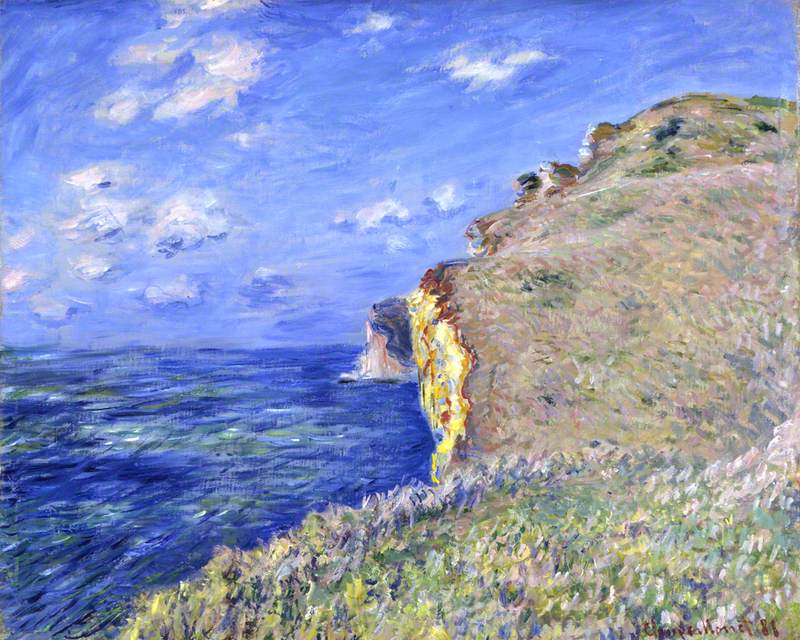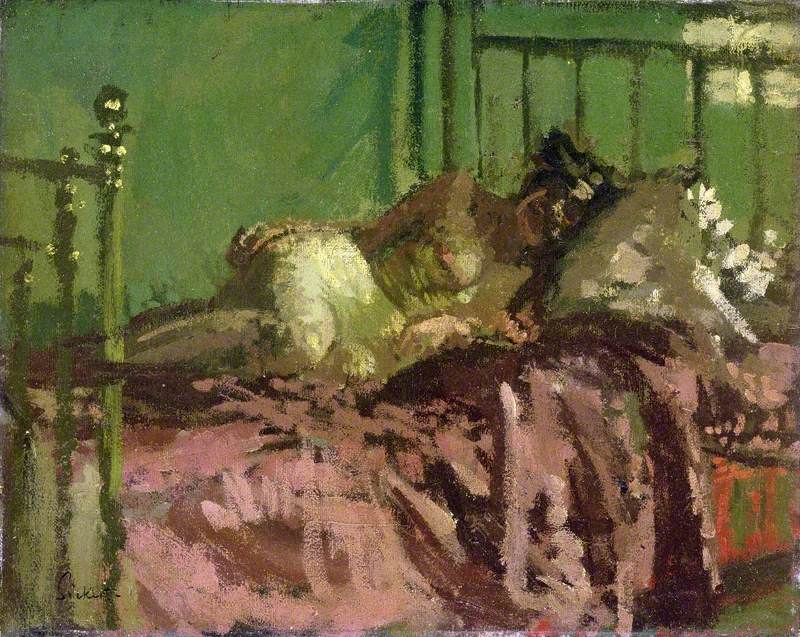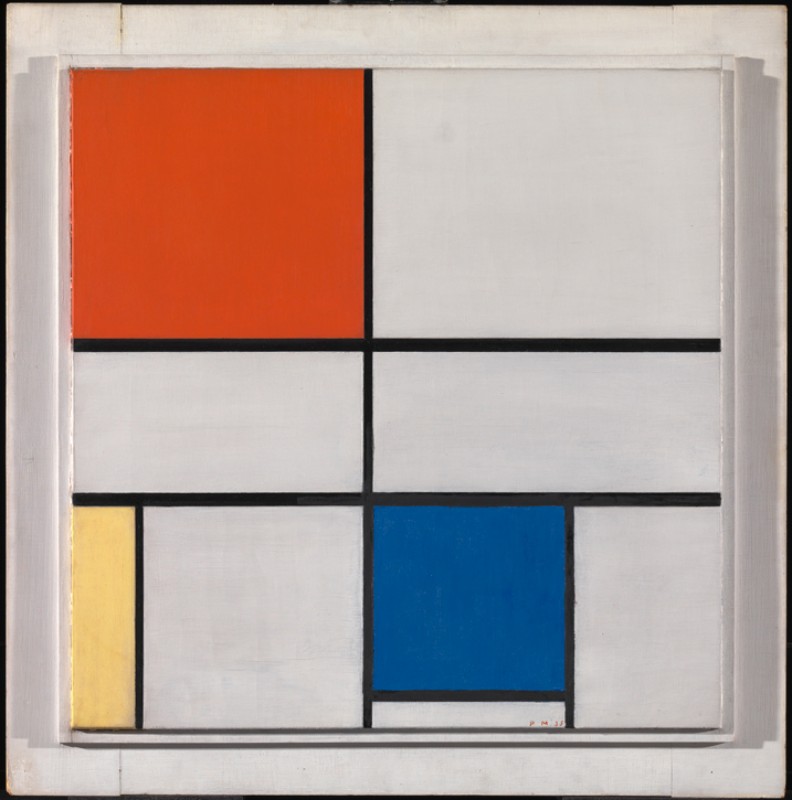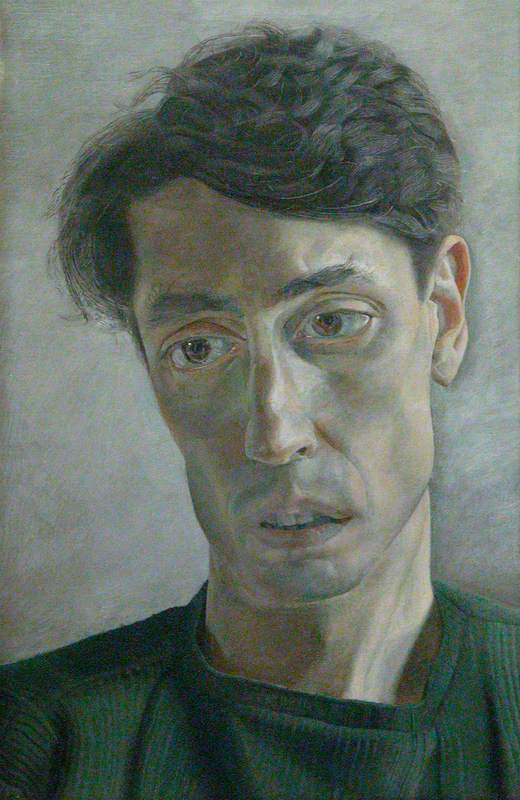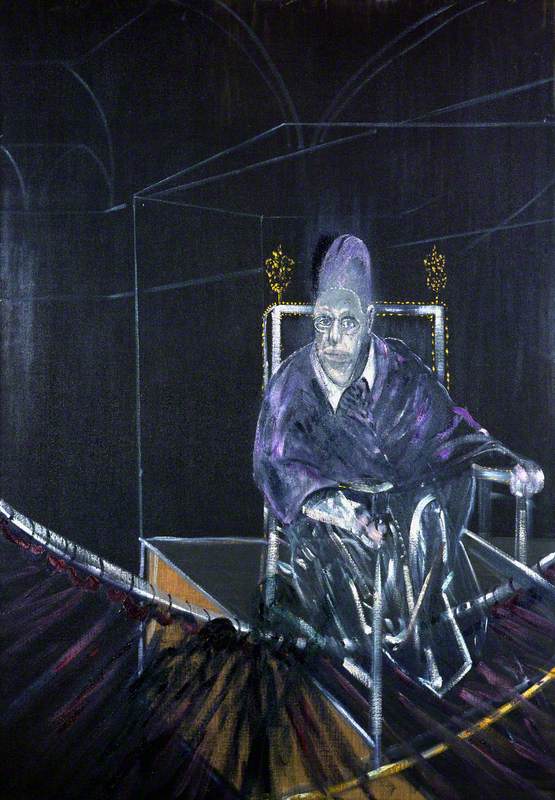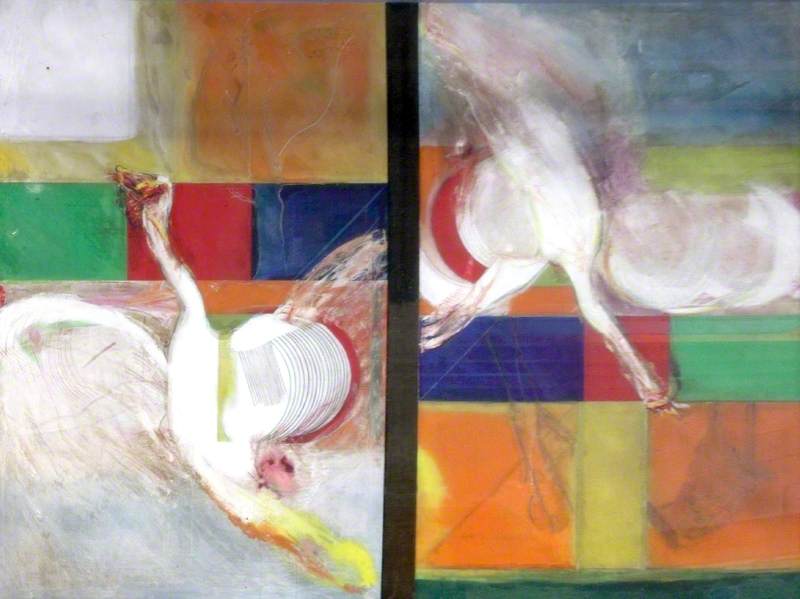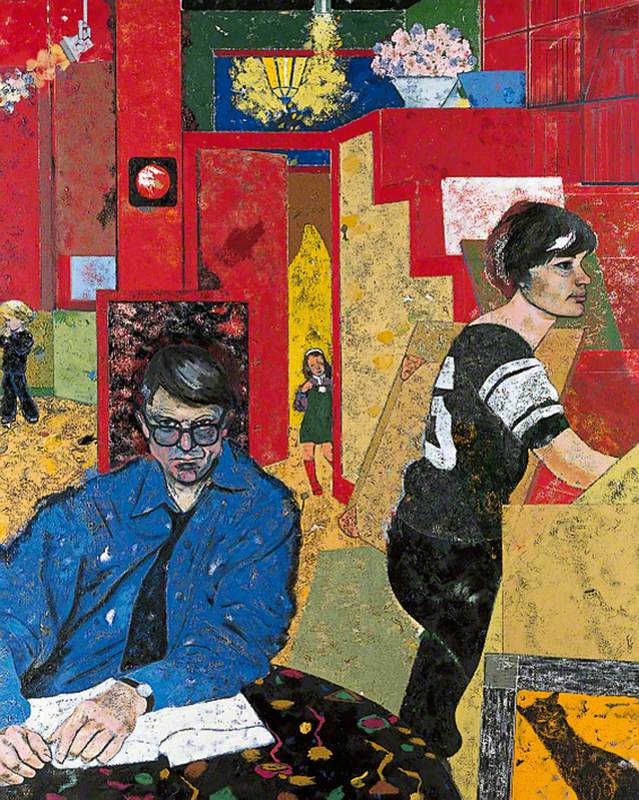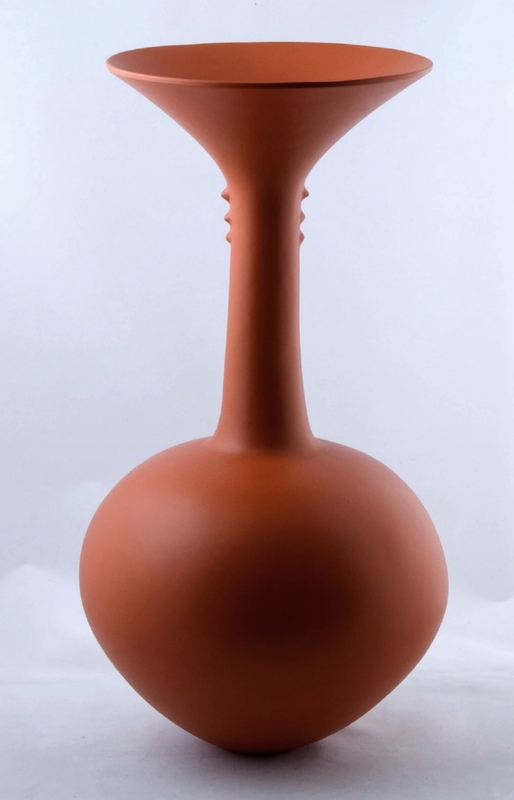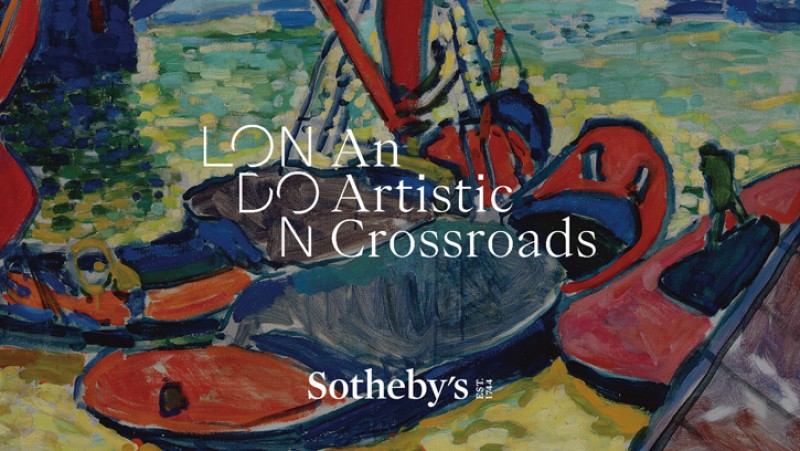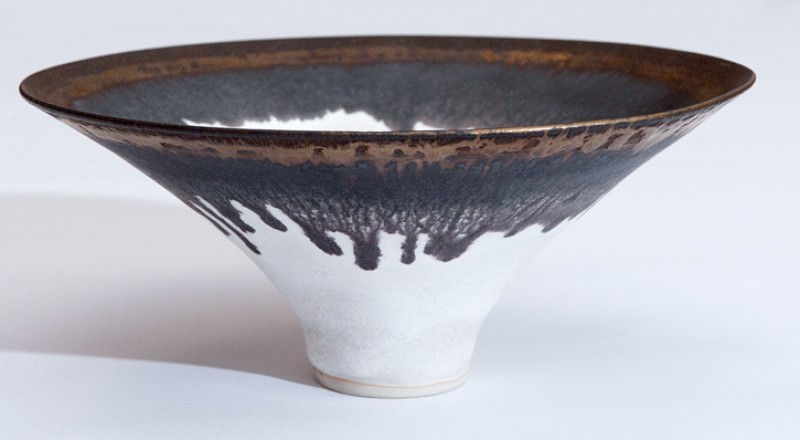Twelve UK museums come together with Art UK and Sotheby's to stage a month-long exhibition celebrating the UK's central role in the creative lives of leading international artists.
The free exhibition 'London: An Artistic Crossroads' is on display at Sotheby's New Bond Street Galleries from 25th May to 5th July 2024.
André Derain was one of the leading members of a group of painters known as les Fauves, or 'wild beasts', in reference to the unrestrained and violently experimental nature of their work. With its field of broken brushstrokes, applied to the canvas like a wonky mosaic, and its aggressively non-naturalistic colour, Barges on the Thames is a perfect example of the exuberant energies of Fauvism, painted when the movement was at its height.
It is also a vivid document of the French avant-garde's persistent and profoundly productive fascination for the city of London.
Derain visited London no fewer than three times during the course of just ten months between the spring of 1906 and early 1907. He was only 25 years old at the time and yet to make his name. The trips were suggested by Derain's canny dealer, Ambroise Vollard, in the hope that the resulting pictures might prove as successful with the buying public as the views of London painted by Claude Monet in 1900–1903.
Years later Derain recalled the origins of the commission in a letter to Ronald Alley, a curator at the Tate Gallery: 'After a visit to London, Vollard was very enthusiastic about the city and wanted some paintings inspired by its atmosphere. He sent me there because he wanted to renew the expression that Claude Monet had tackled so successfully, and which had made such a powerful impression in Paris a few years earlier.'
Derain's illustrious predecessor, Claude Monet, had first visited London in 1870, to escape the turmoil of the Franco-Prussian War. He was fascinated by the fog that so often shrouded the city, and deeply moved by the revolutionary implications of Turner's painting of light, from which (as he acknowledged) he derived the principles of Impressionism. There would always be an element of homage to Turner about his London pictures, accompanied by nostalgia for the city he had known in his youth.
By contrast, the young Derain was weighed down by no such baggage. He identified London not with the past but with the future – and therefore with himself, for what were the Fauves but the painters par excellence of a new world?
Derain has framed his subject, a snapshot of city life, in a way that maximises the sense of hectic movement, of flow and flight and change and transformation. From a low vantage point down by the Embankment he looks up at the expanse of a bridge – the bridge at Cannon Street – scything across the cityscape like a vector of pure energy, a blurred blob of a train steaming across it.
The vessels of heavy industry, some flat-bottomed barges, one with its sprit-sail up but furled, bob and tilt on the twinkling waters. A crane teeters, its hook dangling and clutching at space like a claw.
The painter sees London as a space of explosive transformation, a place where nothing is certain and everything is constantly subject to disconcerting transformations: the perfect inspiration for his own work, which moves and shifts to the same unruly rhythms.
There are no straight lines in the painting, only jagged unstable diagonals. There is not a colour that could be accused of neutrality or mere naturalism: the bridges are cobalt blue, the barges crabshell orange, the sea a mixture of emerald green and cornflower yellow, while the sky is coral pink. Derain may never have painted a better picture than this one. It is no mere depiction of London, but a declaration of love: the painter's affirmation that the city had become his muse.
Andrew Graham-Dixon, art historian and broadcaster
The free exhibition 'London: An Artistic Crossroads' is on display at Sotheby's New Bond Street Galleries from 25th May to 5th July 2024
You can download the free exhibition tour within Art UK's guide on Bloomberg Connects
